How Big of a Tank Does a Hermit Crab Need? (10-20 gallon)
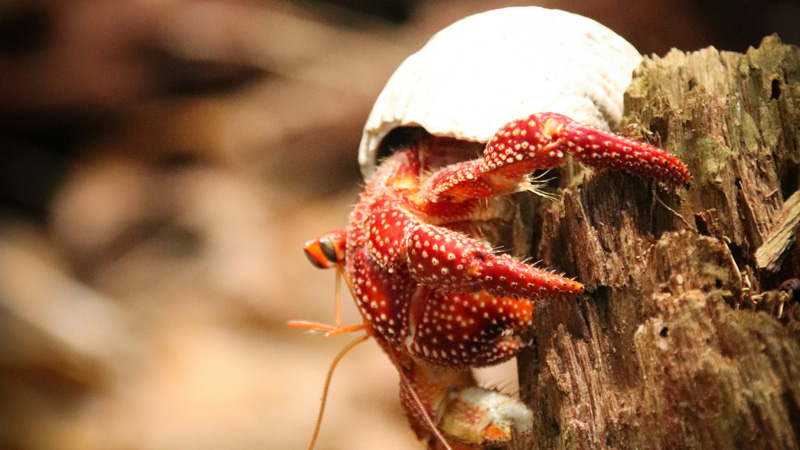
Photo by Gabriel Hidalgo on Unsplash
Hermit crabs are fascinating pets that require a suitable habitat to thrive and live a happy, healthy life. One of the most important aspects of providing a proper environment for your hermit crab is selecting the right-sized tank. A spacious and well-designed tank is crucial for accommodating the needs of these unique creatures. In this article, we will explore the factors to consider when determining the size of a hermit crab's tank and offer guidance for creating an optimal living space for your pet.
The Importance of Size in a Hermit Crab Tank
Hermit crabs are highly active animals that require plenty of space to explore, climb, dig, and molt. A cramped or inadequately sized tank can cause stress, discomfort, and even physical harm to your hermit crab. Providing a sufficient amount of floor space and vertical climbing opportunities is essential for their physical and mental well-being.
Additionally, hermit crabs are social animals and thrive in the company of their own kind. Keeping multiple hermit crabs together in a spacious tank allows them to engage in natural behaviors, such as shell swapping and social interactions. Therefore, it is crucial to consider not only the size requirements of an individual hermit crab but also the potential for housing multiple crabs within the same tank.
Determining the Minimum Tank Size for Hermit Crabs
When it comes to tank size for hermit crabs, the general rule of thumb is to provide at least 5 gallons of space per crab. This ensures that your hermit crab has enough room to move, molt, and explore its environment. However, it is important to remember that this is the minimum recommendation, and opting for a larger tank is always beneficial for your pet's well-being. A great option to consider is a 10-20 gallon tank, which provides even more space for your hermit crab to thrive.
To determine the appropriate tank size specifically for your hermit crab, consider the following factors:
1. Size of the Hermit Crab
Different species of hermit crabs have varying adult sizes. It is important to research the specific species you own and estimate their maximum potential size. Larger hermit crabs will require more space to move around comfortably. For example, Caribbean hermit crabs, the most common pet hermit crabs, can grow up to 6 inches in length, while Ecuadorian hermit crabs are smaller, reaching a maximum size of around half an inch.
2. Number of Hermit Crabs
If you plan to house multiple hermit crabs together, it is crucial to take their social needs into account. Each additional hermit crab will require additional space to ensure they can coexist harmoniously. Providing enough floor space and climbing opportunities for each crab is important to prevent overcrowding and potential conflicts.
3. Climbing Structures, Substrate, and Accessories
Hermit crabs are natural climbers and benefit from a habitat that offers vertical climbing structures, such as branches, logs, and rocks. These structures help them exercise, molt, and explore their environment. Additionally, hermit crabs require a deep enough substrate to burrow and molt properly. Allowing sufficient space for climbing structures, substrate depth, and other accessories, such as hiding spots and food dishes, is important when determining the tank size.
4. Type of Habitat
Different hermit crab species have varying habitat preferences. Some species are primarily terrestrial, while others enjoy spending more time in aquatic or semi-aquatic environments. Taking into consideration the specific needs of your hermit crab species and providing adequate space for their preferred habitat type will contribute to their overall well-being.
Advantages of Providing a Larger Tank
While the minimum recommended tank size for hermit crabs is 5 gallons per crab, there are numerous advantages to providing a larger tank that exceeds this requirement:
1. Enhanced Mobility
Hermit crabs are incredibly active animals that require ample space to move around, stretch their legs, and explore. A larger tank allows them to exhibit their natural behaviors and roam freely, promoting physical activity and mental stimulation.
2. Improved Social Interaction
If you have multiple hermit crabs, a larger tank provides opportunities for increased social interaction. With more space available, the crabs can engage in natural behaviors like shell swapping and establish hierarchies without feeling overcrowded or stressed.
3. Diverse Environment
A larger tank allows for a more varied and enriched environment. You can incorporate different substrates, plants, climbing structures, and hiding spots to create a stimulating and engaging habitat. This variety enhances the well-being of your hermit crab and promotes natural behaviors.
4. Better Heat and Humidity Distribution
Maintaining proper heat and humidity levels is crucial for the health of your hermit crab. A larger tank helps distribute heat and humidity more evenly throughout the enclosure, preventing localized hot or dry spots. This promotes a more stable and comfortable environment for your pet.
5. Easier Maintenance
A larger tank provides more space for your hermit crabs to explore, preventing waste buildup in a concentrated area. With a larger habitat, you have more room to place food and water dishes, reducing the likelihood of contamination. It also allows for easier cleaning and maintenance, such as substrate changes and tank decorations.
Additional Considerations
When setting up a hermit crab tank, it is essential to consider various factors beyond size to ensure optimal living conditions for your pet:
1. Temperature and Humidity
Hermit crabs require specific temperature and humidity ranges to thrive. Providing appropriate heating and humidity sources and monitoring these levels regularly is critical for their well-being. Ensure that your tank is designed to maintain the required temperature and humidity levels efficiently.
2. Lighting
Hermit crabs are primarily active during the night, and they do not require UVB lighting like some reptiles. However, providing a natural day and night lighting cycle can still contribute to their overall well-being. Placing the tank in a well-lit room or using low-intensity ambient lighting can help create a regular day and night rhythm for your hermit crab.
3. Substrate Depth
Hermit crabs require a deep enough substrate to dig and burrow, as it plays a crucial role in the molting process. The substrate should be at least three times the height of your largest hermit crab, allowing them to molt safely. In a larger tank, you have the advantage of providing an adequately deep substrate that meets the needs of your crabs.
4. Tank Design and Decorations
Consider the design and decorations of the tank, ensuring they cater to the natural instincts and behaviors of hermit crabs. Providing climbing structures, hiding spots, and a diverse range of accessories enables your hermit crab to create a home that closely resembles its natural habitat.
In Summary
When it comes to determining the size of a hermit crab tank, it is crucial to consider the needs of your specific hermit crab species, the number of hermit crabs you plan to house, the inclusion of climbing structures and accessories, and the preferred habitat type. While the minimum recommended tank size is 5 gallons per crab, providing a larger tank offers numerous benefits (a 10-20 gallon tank is a great option for 1-3 hermit crabs), including enhanced mobility, improved social interaction, a diverse environment, better heat and humidity distribution, and easier maintenance.
Remember that hermit crabs are active and social animals, and a comfortable, spacious tank allows them to exhibit natural behaviors and live a fulfilling life as your beloved pet. By investing in a suitable tank size and designing a well-thought-out habitat, you can ensure the happiness and well-being of your hermit crab companion.
You May Also Like
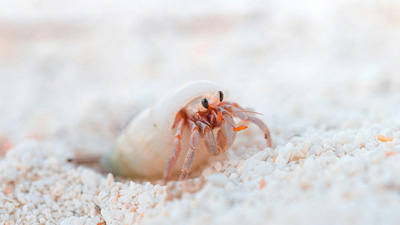 Other PetsIs a Hermit Crab a Vertebrate or Invertebrate? (Invertebrate)
Other PetsIs a Hermit Crab a Vertebrate or Invertebrate? (Invertebrate)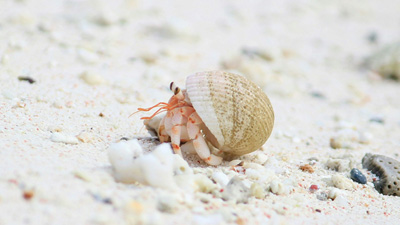 Other PetsDoes a Hermit Crab Have a Backbone?(No, Invertebrates)
Other PetsDoes a Hermit Crab Have a Backbone?(No, Invertebrates)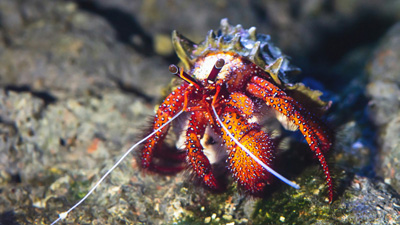 Other PetsHow Long Does a Hermit Crab Live as a Pet?
Other PetsHow Long Does a Hermit Crab Live as a Pet?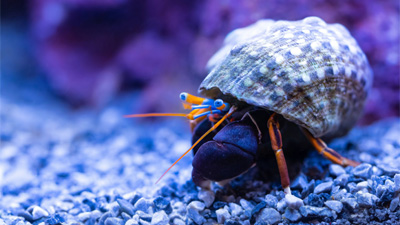 Other PetsCan Hermit Crabs Live in Tap Water?
Other PetsCan Hermit Crabs Live in Tap Water?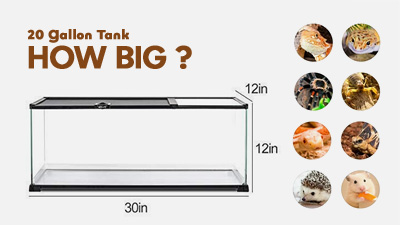 Other PetsHow Big is a 20-Gallon Reptile Tank in Inches?
Other PetsHow Big is a 20-Gallon Reptile Tank in Inches?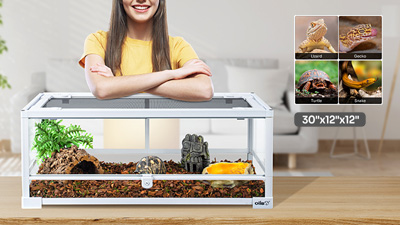 Other PetsThese 5 Reptiles Are Suitable for a 20-Gallon Tank
Other PetsThese 5 Reptiles Are Suitable for a 20-Gallon Tank